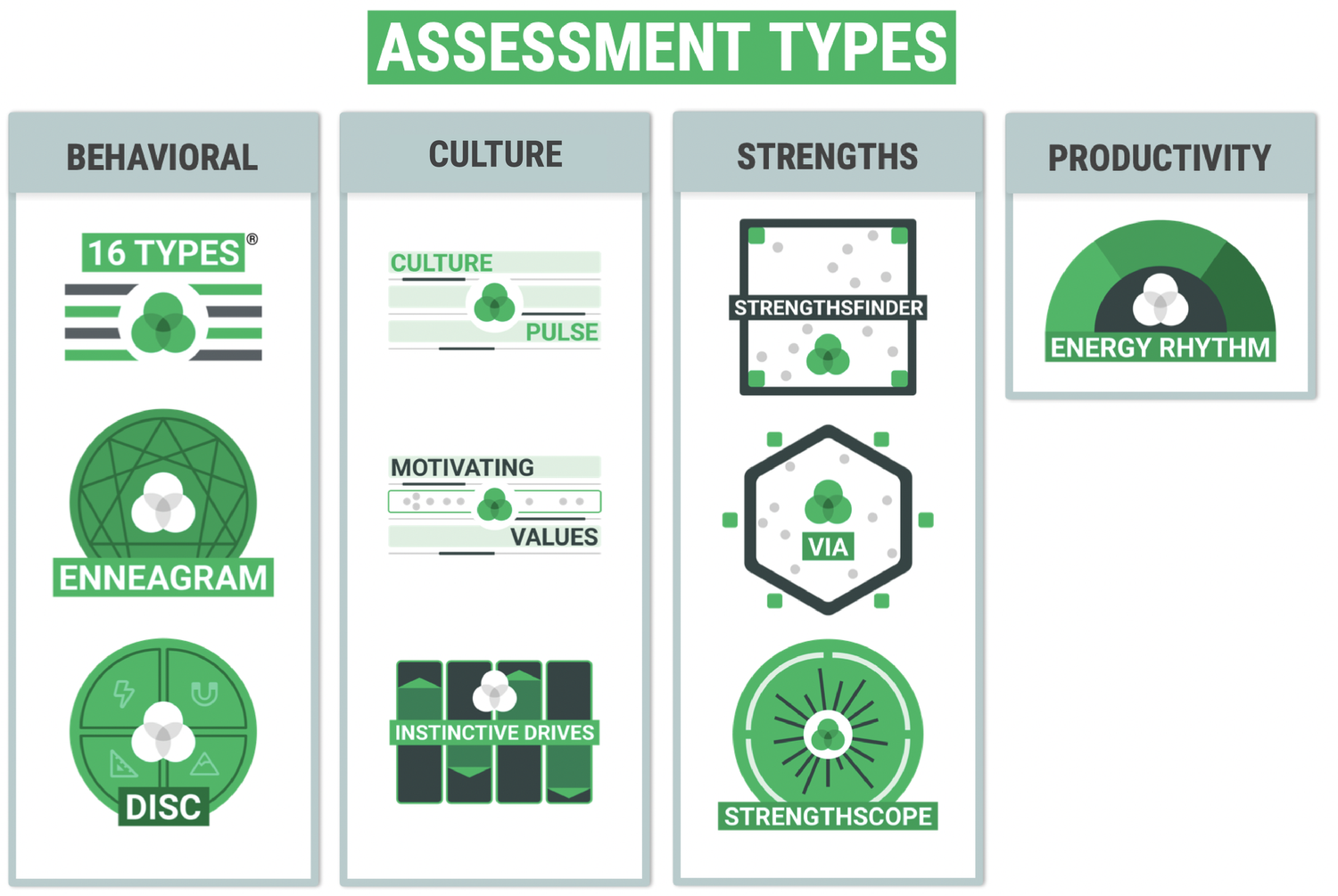Mention the word “conflict,” and it often evokes a sense of discomfort or unease. It’s not surprising then that conflict has garnered quite a negative reputation, particularly conflict in the workplace.
However, it’s time to flip the script and view conflict differently. Conflict can serve as a springboard for innovation and enhanced problem-solving when we handle conflict appropriately. Renowned organizational psychologist, Adam Grant, offers a fresh perspective:
The absence of conflict is not harmony; it’s apathy. If you’re in a group where people never disagree, that could only happen if people don’t care enough to speak their minds. – Adam Grant
Let’s pause and reassess our perspective on conflict, focusing on task conflict. This term refers to disagreements about how to achieve a common goal in the work environment.
Leaders can pave the way for ingenuity and out-of-the-box thinking by cultivating an environment that encourages respectful disagreements. In this light, conflict transforms from an intimidating foe to a powerful catalyst for innovative decision-making.
On the other hand, personal conflict is the type we typically like to avoid. Personal conflict surfaces when clashes arise due to deep-seated issues with someone’s attributes or personality, and we internalize it.
Allowing personal conflict to fester creates an unhealthy workplace, undermining morale and productivity. Hence, conflict resolution becomes critical. It’s crucial for every individual, irrespective of their role or level, to build trust and cultivate understanding and empathy for their colleagues and to continually challenge their own preconceptions.
Now that we’ve unpacked the two kinds of conflicts – task and personal – let’s take the conversation further. Should we aim to manage conflict or strive to resolve it completely?
Key Takeaways:
- Conflict, particularly task conflict, can serve as a catalyst for innovation and enhanced problem-solving when handled appropriately.
- Distinguishing between task and personal conflicts is crucial. Task conflicts can often be managed, while personal conflicts typically require resolution.
- Conflict management and resolution strategies can significantly enhance team productivity and morale, such as clear communication, constructive disagreement processes, and understanding of conflict triggers.
- Embracing conflict, rather than avoiding it, can boost team performance, foster workplace harmony, and lead to better overall results.

The Art Of Dealing With Conflict: Knowing When To Manage vs. Resolve
Not every conflict can be neatly resolved like a sitcom plot in a half-hour episode. Some conflicts may involve an ongoing process where the team continuously hammers out disagreements to eventually reach a decision or desired outcome.
Think about conflict surrounding a decision, process, or goal. This type of conflict, often a task conflict, can be managed over time through active listening and effective communication skills. It’s like a simmering pot on a stove – we keep an eye on it, adjust the heat as necessary, stir occasionally, but let it simmer until it’s ready. The urgency to reach a resolution may be less acute than when dealing with personal conflict.
However, personal conflict often requires immediate attention. It’s like a pot boiling over – left unattended, it can create a mess, causing uncomfortable situations, cliques, and a negative atmosphere that threatens team cohesion and productivity. This kind of conflict calls for prompt resolution, nipping the issue in the bud before it drains the team’s energy and time.

HUMAN SKILL PROGRAMS KEEP HITTING THE SAME LIMITATIONS...
Find Out How To Quickly:
- Close the gap between learning and on-the-job application
- Overcome the tension of pausing productivity for development opportunities
- Integrate learning so it is actually in the flow of work
- Scale human skills development to solve business problems
- Prove the ROI of your talent development programs

4 Effective Strategies For Conflict Management
1. Establish Clear Communication Channels: Clarify ground rules where everyone feels comfortable expressing their ideas and concerns, promoting effective conflict resolution.
2. Develop A Constructive Disagreement Process: Create guidelines for handling disagreements, focusing on the issue rather than the individuals involved.
3. Respect Differing Viewpoints: Cultivate a company culture that values diverse perspectives and appreciates differing opinions.
4. Compare Communication Styles: Utilize Cloverleaf’s Automated Coaching Tips to gain insight into each member’s communication style. This understanding can enable individuals to navigate conflicts with greater awareness of how one another communicates.

5 Essential Steps To Resolving Personal Conflicts
1. Create A Safe Environment: Ensure that all members feel secure and respected on common ground, which is the foundation for effective conflict resolution.
2. Initiate One-on-One Discussions: Handle personal conflicts with care, offering private discussions to address the issues directly.
3. Facilitate Mediation: A neutral third party can help facilitate difficult conversations and conflict resolution when conflicts escalate.
4. Involve Human Resources: In certain cases, it may be necessary to involve HR professionals for further assistance, particularly when conflicts risk violating company policy or workplace rights.
5. Understand Conflict Triggers Among Teammates: Utilize the side-by-side comparison feature in Cloverleaf to help employees explore the diverse thinking patterns and motivational factors of their teammates.
Determining the Course of Action: Conflict Management or Conflict Resolution?
Task conflicts can often be managed, as they typically revolve around differing views on a project or task at hand. They can even spur creativity and innovation when navigated correctly. However, personal conflicts, rooted in personal differences or disagreements, can disrupt team harmony and need to be resolved promptly.
3 Ways To Know If You Should Manage Or Resolve The Conflict
To evaluate whether managing or resolving a conflict is necessary, consider the following aspects:
Type of Conflict: If the cause of the conflict revolves around work procedures, roles, or task distribution, it’s likely a task conflict. On the other hand, if the disagreement is based on personal attributes, it’s a personal conflict.
Conflict Impact: Is the conflict disrupting the team’s workflow or affecting the workplace negatively? A conflict that impacts productivity and team morale or fosters hostility requires swift conflict resolution.
Conflict Duration: How long has the conflict been ongoing? A conflict that persists over an extended period, especially personal, could be damaging to the team dynamic and therefore requires immediate conflict resolution.
4 Red Flags That Conflict Is Impacting Team Harmony and Productivity
Conflicts, when left unchecked, can erode employee engagement and hinder productivity. A few signals that a conflict might be affecting your team could be:
Silent Treatment: One of the first signs of reduced communication is the ‘silent treatment’ – emails going unanswered, fewer casual conversations, or abrupt responses. Individuals may begin to withhold important information from each other, impairing collaboration and slowing down progress on tasks.
Enthusiasm Erosion: A drop in morale often shows up as an erosion of enthusiasm. You may notice decreased participation in meetings, lack of initiative, or negative body language. People may seem less eager to contribute, brainstorm, or share their ideas, sapping the team’s energy.
A Revolving Door of Employees: A high turnover rate can clearly indicate a poor conflict resolution process. If employees leave at a higher than usual rate, especially if they’re key members or those with critical skills, this could signal that the work environment has become too hostile or stressful due to unresolved conflicts.
Subpar Deliverables: A decline in the quality of work may be evident in multiple areas – increased mistakes, missed deadlines, or a lackadaisical approach to tasks that were previously done with care.
The added tension and stress from unresolved conflicts can result in team members being less focused or motivated, leading to outputs that are below the usual standard.
Understanding these nuances of conflict and being able to recognize their signs are vital for maintaining a harmonious and productive team. Early identification allows for prompt intervention, whether that means managing the situation or seeking to resolve conflict.

Strategizing for Success: Conflict Management in Everyday Leadership Scenarios
Effective conflict management isn’t just about theory but practical application. So, how can leaders channel conflict to serve their team rather than hinder it?
To understand this better, let’s explore two scenarios from a leader’s perspective:
Scenario #1: Managing Conflict with a Peer
Task Conflict: Imagine you and a peer, both managers, have a difference of opinion regarding a project where your teams have to collaborate. This disagreement stems from your attempts to safeguard your team’s interests.
The instinct might be to defend your stance adamantly, but the key here is to switch gears from talking to listening. Seek to understand the rationale behind your peer’s approach and view it from their perspective.
Instead of pushing your agenda, strive to create a cooperative partnership. A practical approach could be mapping out the pros and cons of each perspective to foster mutual understanding.
Personal Conflict: Picture organizing an employee recognition event alongside a fellow leader. This peer dismisses your ideas and tries to monopolize the conversation, leading to mounting frustration and escalating tension.
In such a situation, asserting boundaries respectfully and without reactive hostility is crucial: “It seems there’s a disparity in our approach, and I feel a bit sidelined. Could we restart the discussion with a mutual agreement to respect and consider each other’s ideas?”
It might feel awkward to vocalize such sentiments, but setting the tone for interaction is essential. Always remember honesty can pave the way for collaboration. Speaking your truth doesn’t mean burning bridges; rather, it sets the foundation for healthier communication and more productive partnerships.
Scenario #2: Mediating Conflict between Two Teammates
Task Conflict: Two team members clashing over a task or project approach isn’t necessarily negative. In fact, their differing viewpoints can be a source of innovation! As a leader, your role is to facilitate a productive dialogue between them.
First, gather the involved parties and encourage them to present their perspectives. Make sure each idea is fully understood by all parties.
Next, provide your own feedback on the suggested approaches, then encourage each team member to recognize the value in the opposing idea. Foster a spirit of collaboration rather than competition.
Finally, challenge them to jointly create the best possible solution, leveraging their newfound mutual understanding.
Personal Conflict: Navigating personal conflicts between teammates can be challenging, but with a systematic approach, resolution is attainable.
First, arrange a meeting in a neutral setting, ideally after both parties have had time to cool off from the immediate heat of the conflict.
Next, guide each person to articulate the conflict and their feelings in clear terms, focusing on behaviors and desired changes. Encourage the use of “I” statements to avoid blaming.
Facilitate active listening by having each party restate what the other has expressed.
Then, summarize the conflict based on what you’ve heard and secure agreement from both parties on the identified issues.
Conclude the meeting by fostering a sense of teamwork. Encourage the parties to acknowledge each other’s efforts and thank them for their commitment to resolving the conflict.
Remember, your role as a leader isn’t just to extinguish fires—it’s to help your team navigate through them to come out stronger on the other side.

Embracing Conflict, Not Escaping It Is The Solution
Leaders inadvertently set the stage for more complex and increasingly difficult issues to manage by avoiding conflict. Often, conflict arises from misconstrued intentions and assumptions about others. That’s why gaining insights into your team’s dynamics is crucial for effective conflict management and resolution.
Leveraging platforms like Cloverleaf can help you foster better understanding and synergy in your team’s interactions, accelerating conflict resolution and fostering a stronger, more cohesive organization.
Visibility into the communication styles, work approaches, and intentions of colleagues can significantly bolster team cohesion, and improve collaboration, impacting organizational effectiveness.
Schedule a meeting today to learn how Cloverleaf can help you develop the leaders who manage teams.
Final Thoughts
Embracing and understanding conflict is a powerful strategy to boost team performance, foster workplace harmony, and increase organizational effectiveness. The key lies in recognizing the type of conflict at play, appreciating its impacts, and navigating it effectively – either through management or resolution. Remember, conflict isn’t the enemy – it’s how we handle it that makes all the difference.
In today’s increasingly diverse and globally distributed teams, fostering a culture of inclusivity and understanding is essential. One key aspect of promoting this inclusive environment is addressing unconscious bias in the workplace.
Unconscious bias, sometimes called implicit bias, refers to the attitudes and beliefs we unknowingly hold towards others, often stemming from stereotypes and societal expectations. These biases can significantly impact our interactions and decisions, potentially leading to discrimination, exclusion, and unhealthy workplace culture.
The harmful impact of workplace bias is starkly illuminated in a survey where an alarming 33% of those subjected to bias report feelings of alienation. Equally concerning is that 34% of employees facing bias choose to hold back their ideas and solutions. And a massive 80% would hesitate to recommend their employer to others.
These are clear indications of the long-term damage to an organization’s reputation and ability to attract and retain top talent. The importance of addressing unconscious bias in the workplace cannot be overstated.
Organizations can create more inclusive, productive, and engaging work environments by recognizing and actively working to eliminate these biases. This, in turn, benefits not only individual employees but also the overall success and growth of the company.
The following sections will explore unconscious biases, how they manifest in workplace interactions, and practical strategies for preventing and overcoming them to create an inclusive workplace.

Understanding Key Unconscious Biases:
Understanding the different types of unconscious bias is crucial for addressing and mitigating their impact in the workplace. While there are many forms of unconscious bias, we will focus on six common types that are particularly relevant to the recruitment process, hiring decisions, and work environment.
6 PREVALENT FORMS THAT IMPACT THE WORKPLACE
1. Affinity Bias
Affinity bias occurs when we unconsciously favor individuals with similar characteristics, backgrounds, or interests. This can lead to preferential treatment and less diverse teams, as people may inadvertently gravitate towards others who remind them of themselves.
2. Confirmation Bias
Confirmation bias is the tendency to seek out and interpret information in a way that confirms our pre-existing beliefs and assumptions. In the workplace, this can manifest as a manager overlooking an employee’s positive attributes or accomplishments simply because they have already formed a negative opinion about them.
3. Halo Effect
The halo effect refers to viewing someone in an overly positive light due to one outstanding quality or achievement. This can lead to biased evaluations and expectations, as individuals may be given more opportunities or responsibilities based on an inflated perception of their abilities.
4. Horns Effect
The horns effect is the opposite of the halo effect. It occurs when one negative characteristic or incident unfairly colors our perception of an individual, causing us to overlook their positive attributes or accomplishments. This can result in missed opportunities for growth and development within the workplace.
5. Attribution Bias
Attribution bias refers to attributing our successes to our efforts and abilities while blaming failures on external factors. Conversely, we often attribute others’ successes to external factors and their failures to personal shortcomings. This bias can lead to unfair judgments of employees’ performance and potential.
6. Racial and Gender Bias
Gender and racial biases are specific types of unconscious bias manifesting as discriminatory attitudes, beliefs, or stereotypes based on a person’s gender or ethnicity. These biases can lead to discrimination and exclusion within the workplace, limiting opportunities and advancement for underrepresented groups of people.
By familiarizing ourselves with different forms of unconscious bias, we can become more aware of how they may manifest in our daily interactions with teammates. This heightened awareness is the first step towards addressing and mitigating their negative impact in the workplace.

HUMAN SKILL PROGRAMS ARE HITTING LIMITATIONS...
5 THINGS THIS FREE RESOURCE WILL TEACH YOU
- Close the widening gap between learning and on-the-job application
- Overcome the tension of pausing productivity for development opportunities
- Integrate learning so it is actually in the flow of work
- The evolution of human skill development
- What Automated Coaching™ is and how it works.

Detecting and Navigating Unconscious Bias in Workplace Interactions
To foster a truly inclusive and equitable work environment, individuals must recognize unconscious bias within themselves and their interactions with coworkers. This section will explore examples of unconscious bias in everyday interactions, common pitfalls in biased performance evaluations, and active listening techniques for detecting and managing preferences.
11 Examples of Unconscious Bias in Everyday Interactions
Unconscious biases can manifest in myriad ways within the workplace, often subtly influencing daily team interactions. By examining personal and relatable examples, leaders can gain valuable insights into how these biases may affect their organization.
1. Exclusionary Conversations: Favoring certain coworkers in group discussions, dismissing others’ ideas based on preconceived notions, or making inappropriate jokes or comments that marginalize specific individuals.
2. Cliques and Homogeneity: Forming cliques with like-minded individuals or those with similar backgrounds.
3. Biased Choices Affecting Fairness and Opportunities: Allowing personal biases to influence decisions on project assignments, promotions, or hiring, potentially disadvantaging qualified candidates.
4. Assumptions About Expertise: Assuming that specific individuals have more or less knowledge or expertise in a particular field based on their gender, race, or age rather than evaluating their actual qualifications and experience.
5. Microaggressions: Making subtle, indirect, or unintentional discriminatory comments or actions towards individuals from marginalized groups.
6. Overlooking Diverse Candidates: Unconsciously ignoring or undervaluing resumes from candidates with non-traditional backgrounds, names, or experiences.
7. Networking Bias: Favoring individuals who are more similar to you or belong to your social circle during networking events or informal gatherings.
8. Unbalanced Workload Distribution: Assigning tasks and projects based on gender, racial, or cultural stereotypes.
9. In-Group Favoritism: Favoring the opinions and ideas of team members who belong to your own social, cultural, or professional group.
10. Mentoring Bias: Selecting mentees or proteges based on personal similarities or shared interests rather than their skills, potential, or needs.
11. Office Space Bias: Assigning office spaces or seating arrangements based on implicit biases, leading to unequal access to resources, collaboration opportunities, or visibility within the organization.

5 Common Pitfalls in Biased Performance Reviews
As leaders striving to foster growth and development within your team, it’s crucial to ensure that performance evaluations are free from unconscious biases. Understanding and addressing potential pitfalls can create a more equitable and supportive environment for all employees.
1. Relying On Stereotypes: Evaluating an employee’s performance based on gender, racial, cultural, age, or personality stereotypes rather than their abilities and achievements.
2. Focusing On Recent Events: Overemphasizing an employee’s recent successes or failures rather than considering their overall performance over an extended period.
3. Comparing Employees Unfairly: Judging an employee’s performance against that of their peers without considering differences in roles, responsibilities, or circumstances
4. The “Similar-to-Me” Bias: Overvaluing employees who share similar interests, life experiences, or characteristics with you, leading to an inflated assessment of their performance and potential.
5. The “Negative Attribution” Bias: Tending to attribute an employee’s mistakes or shortcomings to personal factors while attributing successes to external factors or luck, leading to an unfairly negative evaluation of their performance.
Awareness of and addressing unconscious biases in workplace interactions is crucial for fostering a more diverse, equitable, and inclusive (DEI) environment. By understanding how these biases can manifest in communication, team dynamics, decision-making, and performance evaluations, leaders can take proactive steps to mitigate their impact.
Proactively Addressing and Preventing Unconscious Bias in the Workplace
Tackling unconscious biases proactively is essential for cultivating a workplace where every employee can flourish. A commitment to diversity and inclusion is indispensable for stimulating innovation, boosting employee engagement, and elevating overall business performance.
By championing these values, organizations can harness the power of diverse perspectives, experiences, and skills, resulting in more effective decision-making and problem-solving capabilities.
Furthermore, increasing self-awareness plays a crucial role in this journey. When employees and leaders become more cognizant of their biases, they are better equipped to challenge and change their thought patterns.
To become aware of your own biases, start by educating yourself.
Paying attention to your thoughts and examining your beliefs can help you identify your current assumptions. – Harvard Business Review
This heightened self-awareness reduces bias and fosters empathy and understanding, fostering an environment where every person feels valued and respected.

RESOURCES FOR IDENTIFYING BIASES
The Cloverleaf Team Dashboard is a powerful tool that enables leaders and team members to effectively identify biases within teams, providing an array of benefits and features, such as:
- Comprehensive Insights: Gain a holistic understanding of your team’s strengths, weaknesses, and communication styles to proactively identify and address potential biases.
- Validated Assessments: Access some of the most popular and trusted assortments to gather valuable individual and team dynamics to uncover potential biases.
- Actionable Automated Coaching™: Receive accurate, relevant, in-the-moment coaching nudges on how to address identified biases, enhance collaboration, and improve team performance.
Leveraging comprehensive insights, validated assessments, and actionable coaching empowers users to identify and proactively address potential biases.
5 ACTIVE LISTENING TECHNIQUES FOR COACHING AND MANAGING BIASES
Active listening is essential for detecting and managing unconscious biases in workplace interactions. By employing specific techniques and honing their active listening skills, leaders can foster open communication and promote understanding among teammates.
1. Provide Your Full Attention: Consciously focus entirely on the speaker, avoid distractions, and maintain eye contact. Practice being present in the moment, setting aside personal thoughts or judgments, and providing visual cues (e.g., nodding) to show engagement.
2. Reflect And Paraphrase: Summarize the speaker’s key points in your own words to ensure understanding and show empathy. Practice using phrases like “What I hear you saying is…” or “It sounds like…” to demonstrate that you are actively listening and valuing their perspective.
3. Ask Open-Ended Questions: Encourage further elaboration and exploration by asking open-ended questions that cannot be answered with a simple “yes” or “no.” Practice using phrases like “Can you tell me more about…” or “How did you feel when…” to invite deeper conversation.”
4. Suspend Judgment: Consciously set aside personal biases and opinions while listening to others. Practice active curiosity, seeking to learn and understand the speaker’s perspective, even if it differs from yours.
5. Providing Non Judgemental Feedback: Offer constructive, empathetic, and unbiased feedback. Practice using “I” statements to express your thoughts and feelings without placing blame or judgment on the speaker (e.g., “I understand your concern, and I think it would be helpful if we considered…”).
By incorporating these tips into your daily interactions, you can effectively implement and improve active listening techniques, allowing you to better manage and address unconscious biases in the workplace.
Leadership’s Crucial Contribution to an Equitable Workplace Culture
Leaders play a pivotal role in shaping the culture of a workplace. Their actions, attitudes, and decisions set the organization’s tone and profoundly influence their teams’ behavior. In the context of unconscious bias, leaders have a significant responsibility to foster an equitable and inclusive work environment. Here’s how:
1. Exemplify Inclusive Behavior
As a leader, make a conscious effort to demonstrate inclusivity. Value each member’s unique contributions, celebrate diversity, and ensure fair treatment across the board. Modeling this behavior encourages others to do the same.
Acknowledging and valuing the unique strengths and perspectives of all team members, irrespective of their personality types
For example, incorporating members of each Enneagram Triad in your team could lead to a richer variety of viewpoints. The Gut Triad (Types 8, 9, and 1) brings instinct and intuition to the table. The Heart Triad (Types 2, 3, and 4) adds emotional intelligence and empathy, while the Head Triad (Types 5, 6, and 7) contributes intellect and analytical thinking.
Similarly, by considering all DISC profile types (Dominance, Influence, Steadiness, and Conscientiousness), leaders can ensure a balance between assertive, people-oriented, steady, and analytical personalities respectively. This balance can promote comprehensive decision-making and effective communication within the team.
16 Types also provides insight into a range of personalities that leaders can use to foster a well-rounded and balanced team.
Leaders can celebrate inclusivity in a deeper sense by intentionally including and valuing members with diverse personality types. Going beyond obvious characteristics like race, gender, and age to value diversity in thought, perspective, and approach.
Don’t limit yourself or your team to a single perspective; remember, the more assessments you engage with, the richer your understanding becomes. Start your journey towards a more cohesive and productive team today by taking your first assessment at Cloverleaf!

Take A Cloverleaf Assessment
By taking assessments and getting actionable insights on your results, you’ll learn something new about yourself and your team.
- Unlock your team's full potential and try Cloverleaf today.
2. Implement Diverse And Inclusive Policies
Champion diversity and inclusion by establishing diverse hiring practices and offering equal growth and development opportunities. Create policies that discourage discrimination and encourage flexibility, ensuring everyone in your team feels supported.
3. Invest In Supportive Resources
Empower ongoing development by utilizing tools and training programs to showcase your commitment to reducing bias.
4. Facilitate Open Dialogue
Foster a culture of open, honest conversations around bias and discrimination. Regularly invite and be receptive to feedback, and take prompt action to address any issues that arise.
5. Monitor And Rectify Bias
Regularly assess the workplace for signs of bias. Solicit input from employees and conduct audits to implement measures to correct these biases swiftly.
By adopting these steps, leaders can ensure their leadership approach actively contributes to a more equitable, inclusive workplace culture.

The Long-Term Benefits of Addressing Bias In The Workplace
The journey to an inclusive and equitable workplace requires unearthing and addressing biases. Employees who feel valued and included are more likely to be committed to their roles, stay with the company longer, and contribute more effectively to the team’s goals.
Promoting a workplace free from bias is not just the right thing to do—it’s an intelligent business strategy that can drive growth, innovation, and success in the long term. It sends a strong message to potential employees, stakeholders, and the public that the company values fairness and equity. Further, an inclusive and equitable workplace attracts top talent from various backgrounds, enhancing the organization’s reputation, retention, and competitiveness in the global market.
Creating better workplaces is paved with awareness, understanding, commitment, and action toward reducing unconscious bias. While the journey may be challenging, the rewards – a truly inclusive, diverse, and equitable workplace where everyone feels valued and empowered – are worth the effort.


